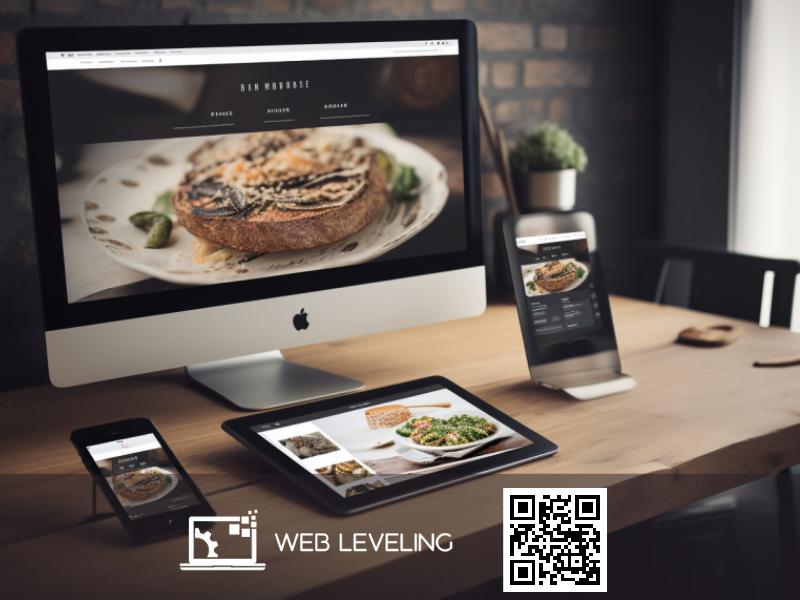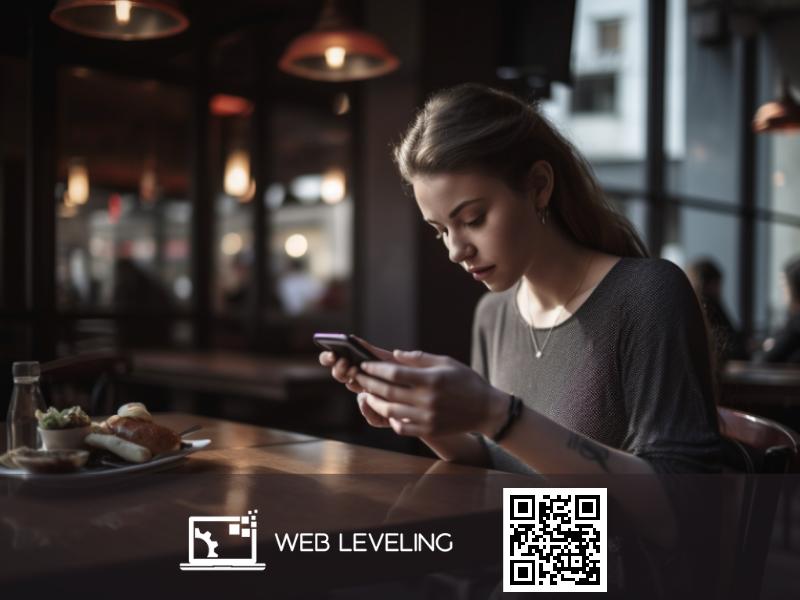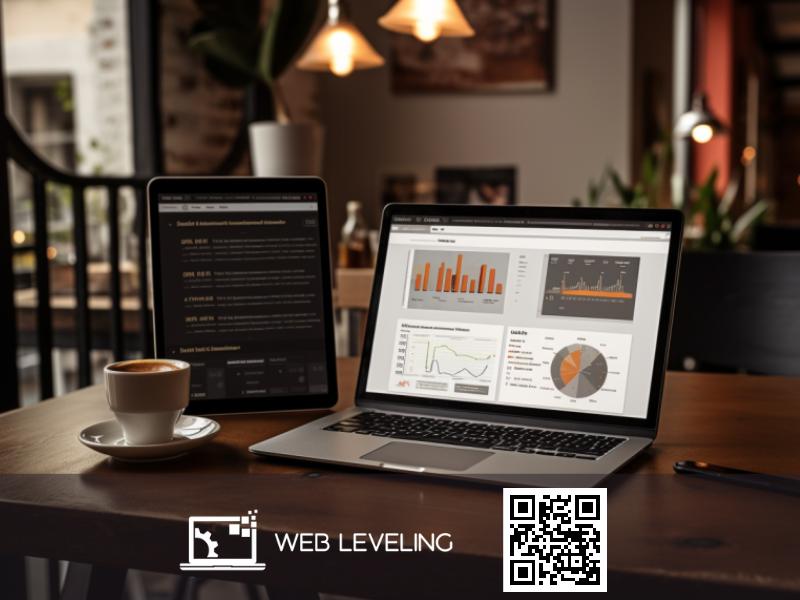Web Design For Restaurants: Tips To Create A Mouth-Watering Site
Are you ready to make your restaurant’s website sizzle? With the right web design, you can create a mouth-watering site that will captivate customers and draw them in. Creating the perfect digital presence for your eatery is an art – one that requires careful consideration of style, content, and usability. In this article, we’ll be dishing out helpful tips on how to craft a delicious web design for restaurants.
We all know first impressions count; it takes just seconds for users to decide whether they’re going to stay or head off somewhere else. To ensure potential diners get their appetite whetted with every visit, let’s look at what makes great web design for restaurants. Whether it’s creating a visually appealing layout or optimizing speed and functionality, there are plenty of ways you can tantalize visitors with your online offering.
So don’t wait any longer! It’s time to start cooking up the best possible website for your restaurant – one that looks good enough to eat!
Overview Of Restaurant Websites
Restaurant websites are becoming an increasingly important part of a successful business. They provide customers with information about menu items, hours, and locations, as well as a way to make reservations or order takeout online. A website can also help establish the restaurant’s brand identity by showcasing its unique style, atmosphere, and cuisine. It’s essential for restaurants to create a website that reflects their vision and appeals to hungry diners.
When designing your website, it’s important to consider user experience first and foremost. Make sure navigation is intuitive so visitors can easily find what they’re looking for without getting lost in menus or pages. The design should be eye-catching but not overwhelming; focus on creating visual interest within the content rather than using too much animation or busy backgrounds. Additionally, include clear calls-to-action throughout the page, such as ‘book now’ buttons or links to ordering platforms like GrubHub or DoorDash.
Overall, restaurant websites should aim to capture the essence of your establishment while providing users with convenient access to all necessary information. With thoughtful planning and execution, you’ll have no trouble creating an engaging site that will draw hungry customers in droves!

Elements Of Design
“A picture is worth a thousand words.” This adage rings true in the world of web design, especially when it comes to restaurants. An eye-catching website can draw customers and promote your restaurant’s brand. When designing your website, there are several elements to consider that will make your site stand out from the competition.
First, focus on imagery that highlights the restaurant’s atmosphere and aesthetic. Using high-quality images creates an inviting environment for potential customers before they even set foot inside the building. Additionally, having stunning visuals sets you apart from other establishments by creating a unique online presence for your business.
The second key element is typography: how you use text on your website should be intentional and aesthetically pleasing. Colorful fonts help create visual interest while simultaneously conveying important information about menus or events hosted at the restaurant. Another helpful tip is to include call-to-action phrases throughout the site; this encourages visitors to take action, such as booking reservations or reading reviews about their experience at the restaurant.
All these components come together to form an effective website for any restaurant – one sure to leave its viewers hungry for more!

Choosing The Right Platform
Choosing the right platform for your restaurant website is a crucial step. It’s important to factor in cost, functionality, and scalability when making this decision.
WordPress is an excellent choice for most restaurants because it’s both user-friendly and affordable. There are also many plugins available that will help enhance the overall design experience with features such as online ordering, photo galleries, and more. Plus, WordPress sites can easily be scaled up if you decide to expand later on down the line.
Squarespace is another popular option due to its drag-and-drop editor, which makes web design easy even for beginners. Squarespace has some great built-in features like ecommerce capabilities and search engine optimization so your site can rank higher in search engine results pages (SERPs). However, while Squarespace offers good value, there are still additional costs associated with these extras that might add up over time.
Overall, no matter what platform you choose for your restaurant website, make sure it meets all of your needs now as well as any potential growth plans in the future.

Customizing Your Website
Once you have chosen the right platform for your restaurant’s website, it is time to customize. Creating an inviting and visually appealing website can be a difficult task – but with some creativity and careful attention to detail, you can create something that will make people hungry just by looking at it!
The first step in customizing your site is choosing colors. For restaurants, warm hues like reds and oranges often work best as they evoke feelings of hunger. In addition, using contrasting colors helps draw people’s eyes to specific elements or features on your page. As well as picking out the perfect palette, consider how the font style reflects on your brand. A more formal script would suit upmarket establishments, while a fun typeface could give off a relaxed vibe.
When designing pages for specific dishes, photos are essential! Pictures of delicious food will surely whet customers’ appetites and give them an idea of what they can expect when they visit your restaurant. However, avoid stock images as much as possible – capturing high-quality shots yourself will lend authenticity to your site and help build trust with potential diners. Of course, don’t forget about including descriptions of each item, too. This way, visitors won’t be left guessing what ingredients go into their favorite dish!
Customizing your website doesn’t end there, though. Think about adding interactive elements such as online reservation options or menus that link directly to ordering systems. These little touches will add convenience for customers who want quick access to all aspects of the dining experience in one place. With these tips in mind, you’ll soon have an attractive and user-friendly site that will entice customers in droves!

Web Hosting Considerations
When it comes to web hosting for a restaurant website, there are many options available. The most critical factor is determining the type of server that will best suit your needs. Shared servers can be great for low-cost web hosting and provide a more secure environment than shared hosting plans. However, if you plan on having large amounts of traffic or need additional features such as email accounts and database access, dedicated servers might be a better option. It’s also important to consider how much bandwidth and storage space you’ll require in order to host your site properly.
Another critical consideration when selecting a web host is whether they offer any website security measures or other tools to help protect your site from potential cyber-attacks or malicious activity. Many hosts have built-in firewalls and virus protection software, so make sure you check what kind of protections they offer before signing up with them. You should also research their customer service policies – after all, if something goes wrong with your website, you’ll want someone who can assist quickly and efficiently.
Finally, it’s essential to look into the uptime guarantee offered by each provider – this ensures that your website will remain online no matter what time of day or night it is accessed. A good web host will typically promise 99% uptime or higher, ensuring that customers can always find your restaurant’s website when searching online – which ultimately leads to increased sales!

Developing Content For Your Site
Creating content for a restaurant website is like cooking up an exquisite dish – both require precision and finesse to be done right. When it comes to the web, your ingredients are words that can tantalize any viewer’s taste buds, stirring their interest in what you have to offer. To craft compelling content that will make visitors hungrily explore further into your site, here’s what you should do:
Start by telling your story. Potential customers need to get a sense of who you are as a business before they decide whether or not they want to dine with you. Give them a glimpse into the history of the restaurant; how did it come about? What makes it special? What values does it embody? Showcase all this information through captivating narratives and enticing visuals.
Once potential diners understand why your establishment stands out from others, promote the must-try dishes on your menu! Use colorful images, creative descriptions, and mouth-watering adjectives to make viewers crave more. If possible, include reviews from happy customers or showcase awards won at food festivals – anything which bolsters the appeal of certain dishes.
The key takeaway when developing content for any website is that each word needs to draw people in and keep them engaged until they eventually take action. Keep things interesting yet informative so readers stay hooked without getting overwhelmed by too much text. In short, let your flair shine through while remaining true to what truly matters – giving visitors an unforgettable dining experience!

Creating Eye-Catching Visuals
It’s time to add some flair and make your restaurant website stand out. Visuals play an important role in creating a great user experience when it comes to web design for restaurants. Here are some tips on how you can create eye-catching visuals:
- Colors: Use colors that reflect the vibe of your restaurant. Pick warm, inviting tones as they will give people the feeling of being welcomed into your establishment.
- Background: Make sure the background color or image complements the overall look and feel of your website.
- Text: Choose fonts that are easy to read so visitors don’t strain their eyes while browsing through your site.
- Images: Showcase high-quality photos of food dishes, drinks, interiors, etc., to draw attention and entice viewers. You could even include customer testimonials with pictures for added impact.
- Quality: Invest in professional images if possible, as this helps set a higher standard for quality which makes customers more likely to trust that you provide a good service/product.
- Types: Include different types of photographs such as close-ups, panoramic views, lifestyle shots, and more to show off all aspects of your restaurant experience.
Lastly, videos also work great when used sparingly, as they help create a more engaging atmosphere within the website that draws in viewers who may not have otherwise visited your page. Overall, keep in mind that visuals should always be cohesive with each other and support the overall message or theme of your brand.

Optimizing For Mobile Devices
It’s a daunting task, this endeavor of creating an appetizing website for restaurants. However, with the proliferation of mobile devices and their increasing role in web browsing, it is paramount that restaurateurs optimize their sites to be fully responsive on such platforms.
For starters, restaurant websites should take into account the various sizes of mobile screens and adjust accordingly. This can involve reducing superfluous content and focusing instead on what matters most: menu items, contact information, location details, hours of operation, etc., as well as ensuring legibility by utilizing larger fonts and buttons which are easy to tap or click.
The use of high-quality visuals is also essential when crafting a pleasing site for mobiles. Restaurants should strive to include vibrant images that best capture the essence of their culinary offerings, photos that will whet users’ appetites and inspire them to pay a visit! In addition, they ought to employ videos – if feasible – to bring their establishments alive and further entice potential customers.
A great way then to make sure restaurants stand out from the competition is through optimizing their online presence for mobile browsers. Leveraging modern technologies can go a long way toward providing a unique user experience for guests who choose one’s establishment over another!

Enhancing Navigation And User Experience
A well-structured website is vital for creating an enjoyable user experience. It’s essential to make sure all menus, images, and contact information are organized clearly and succinctly. Navigation should be intuitive and easy to understand. That way, customers can easily find what they’re looking for without becoming frustrated.
Using drop-down menus makes it easier for visitors to explore pages on your site while providing clear paths of navigation. Showcasing photos of menu items is also a great way to help users choose what they want more quickly. This can increase overall satisfaction with their website viewing experience and encourage return visits.
Overall, it’s essential to pay attention to how people will interact with your site when designing its structure and layout. Make sure all the necessary information is present so customers don’t have any difficulty locating it. With effective navigation in place, you’ll get more satisfied customers who return time after time!

Integrating Social Media Platforms
Restaurants must be seen, heard, and tasted. A great website is the first step to getting noticed in a competitive market. Integrating social media platforms into your site can help you spread the word about your restaurant far and wide.
The bridge between web design and social media connectivity is essential for restaurants looking to reach new customers. Social media allows businesses to communicate directly with their target audiences and build relationships through engagement. It also offers a platform where restaurants can promote specials, showcase their dishes, and even interact with customers who leave reviews or messages on their pages.
To get started with integrating social media into your restaurant’s website, create accounts on all major platforms like Facebook, Twitter, Instagram, YouTube, and LinkedIn that are related to your business name.
Once these accounts are established, add links from each of those profiles back to your website so people can easily connect with you online. This will allow potential guests to learn more about what makes your restaurant unique by viewing photos of meals served at your establishment as well as reading reviews written by past patrons. Additionally, promoting special events or discounts via social media helps draw attention to the offerings available at your restaurant.
Taking time to integrate social media channels into a website not only helps increase visibility but also provides an opportunity for restaurants to build meaningful connections with their audience over time. An effective strategy should include engaging content explicitly created for each platform while also keeping it consistent across multiple sites when possible. This way, customers will always recognize the brand no matter which channel they land on!

Utilizing Digital Marketing Strategies
In the digital age, it is essential for restaurants to have a strong online presence. Digital marketing can help enhance this presence and attract more customers. The first step in creating an effective digital strategy begins with understanding your target audience. This will enable you to identify better which channels are best suited for reaching them, from social media platforms such as Instagram or Twitter to Google Ads and other search engine optimization (SEO) tactics. Once you understand your customer base, you’ll be able to create unique content that speaks directly to them, develop campaigns tailored towards their needs, and properly allocate resources accordingly.
The second step in forming an effective digital marketing campaign is leveraging analytics data collected from these various sources. Data-driven insights allow restaurant owners to quickly identify what’s working and what isn’t so they can make adjustments if necessary. For example, if a specific ad generates high click-through rates but low conversions, then tweaks may need to be made in order to ensure maximum efficiency of resource allocation. Additionally, analytics tools provide detailed performance metrics, which can be used to track progress over time and adjust strategies when needed.
Finally, investing in user experience is another critical element of successful digital marketing efforts. When visitors land on a website or mobile app, they should find a seamless navigation system that allows them easy access to all relevant information without getting lost among irrelevant pages or menus. It’s also vital that the site loads quickly and displays well on both desktop computers and mobile devices – after all, most people now use smartphones for shopping online! By ensuring users enjoy their visit to your web page or app, you’ll increase engagement levels and encourage loyalty amongst existing customers while attracting new ones along the way too!

Generating Engaging Content
In order to generate engaging content for a restaurant website, it’s essential to understand the needs of your target audience. A recent study found that 91% of consumers prefer to read about food-related topics over any other subject matter when visiting a restaurant website. With this in mind, here are four key points to consider when creating content for your site:
- Provide enticing visuals, such as photos and videos from inside your restaurant
- Offer helpful tips on how customers can save money with discounts or loyalty programs
- Share stories about locally sourced ingredients and suppliers
- Highlight customer reviews, awards, and successes
Content should always be tailored toward the interests of potential diners. For example, if you serve regional cuisine or offer unique dishes, then emphasize those elements throughout your content. Additionally, keep posts short and sweet so readers don’t become overwhelmed by too much text. To ensure continuous engagement with visitors, make sure to regularly update your blog or social media channels with fresh new content. Ultimately, every post should strive to capture the essence of what makes your business special.

Ensuring Website Security And Compliance
When it comes to creating a website for your restaurant, ensuring website security and compliance is an essential part of the process. Customers need to trust that their data will be safe on your site, so they can confidently make purchases or submit reservations. That’s why it’s important to take steps to make sure customers don’t experience any malicious attacks when visiting your website.
Firstly, use SSL certificates to secure all pages on your site from hacking attempts. This type of encryption ensures visitors’ information stays private and secure whenever someone visits or submits sensitive data via forms or payment transactions. You should also include firewalls and malware scans as extra layers of protection against potential threats.
Finally, it would help if you abode by specific legal regulations regarding collecting personal data like name, address, phone number, etc. Make sure there are appropriate checkboxes with precise wording asking customers whether they agree to share this kind of data with you before submitting it into your database. Doing this helps protect both parties involved while still allowing you to collect customer information if needed safely.

Testing And Monitoring Performance
Now that your restaurant’s website is secure and compliant, it’s time to focus on testing and monitoring performance. Testing ensures the site looks and functions correctly from different perspectives, such as mobile devices or computers with different browsers. This helps ensure visitors are able to access the information they need regardless of their device or software configuration.
Once the tests have been conducted, the next step is to monitor performance. Monitoring can include tracking page views and content popularity, analyzing user navigation patterns, checking loading times for pages, and measuring overall uptime. All these metrics help identify areas where optimization may be necessary in order to improve user experience.
Regularly reviewing results allows restaurants to stay ahead of any issues that may arise while also providing insight into improving conversions by optimizing menus, layout designs, and more. By keeping an eye on how users interact with the website, restaurateurs can make sure customers remain satisfied with their online dining experiences.

Analyzing Visitor Data
It’s essential for restaurants to analyze visitor data in order to make their web design more effective. This will help them identify popular menu items, understand how customers interact with the website and improve user experience overall.
To start analyzing visitor data, restaurant owners should first consider what type of data they want to collect. Some key metrics include page views, time spent on a given page, clicks per link, number of transactions completed, and mobile vs. desktop usage.
| Metric | Description | Example |
| Page Views | Number of times a web page is loaded by visitors. | Ten people viewed the homepage today. |
| Time Spent on Page | Amount of time each visitor spends on an individual page. | Visitors spend an average of 2 minutes on the home page. |
| Clicks Per Link | The total number of times users click links within a certain period of time. | Seven people clicked the ‘About Us’ link this month |
Analyzing these metrics can provide insight into customer behavior and preferences which can be used to optimize site performance and enhance user engagement with content features like menus or loyalty programs. With proper analysis, businesses can better anticipate customer needs and develop strategies that ensure their websites are delivering maximum value for both customers and owners alike.
By gathering information about user activity online, restaurateurs have access to valuable insights that enable them to personalize experiences, adjust promotions accordingly and maximize success rates throughout all areas of operations – from marketing campaigns to supply chain management. The wealth of data available allows businesses to tailor services precisely according to customer demands while ensuring operational efficiency at every level.

Final Thoughts
Designing a website for your restaurant can be an overwhelming task. However, with the right tips and strategies in place, it doesn’t have to break the bank or take forever. By considering important elements like security, digital marketing techniques, and tracking data analytics, you’ll be able to create a mouth-watering site that will draw customers in.
It’s easy to get lost in all of the details when designing a website but don’t forget why you’re doing this – to attract more guests! With the help of these tips and tricks, I’m sure you’ll put together something unique that will make your restaurant stand out from its competition. Plus, once everything is up and running, you can start seeing actual results as people flock to your delicious food.
Overall, creating a successful website for your restaurant isn’t too difficult if you know what factors to consider. Take some time to do research on different web design practices so that you can ensure your site looks professional yet inviting. Once everything is set up properly, we’re sure you’ll see just how beneficial having an online presence can be for business growth. If you are thinking of launching a new website for your restaurant or if you need to update your current website to make it look a little more modern, our web design experts at Web Leveling can help you every step of the way. We specialize in creating websites that are both visually appealing and easy to navigate, so your customers will have a positive experience while they’re browsing your website. Contact us today to get started on your next project!
Frequently Asked Questions About Website Design for Restaurants

Cal Hewitt is the Founder, CEO, and Project Lead at Web Leveling, a digital marketing agency empowering small and mid-sized businesses to thrive online. With over 27 years of experience in business analysis, management, consulting, and digital marketing, Cal brings a unique perspective to every project. He specializes in website design and development, AI consulting, social media marketing, and online reputation management. Cal’s hands-on leadership style and commitment to innovation ensure that Web Leveling stays at the forefront of digital marketing trends, delivering transformative results for clients.








